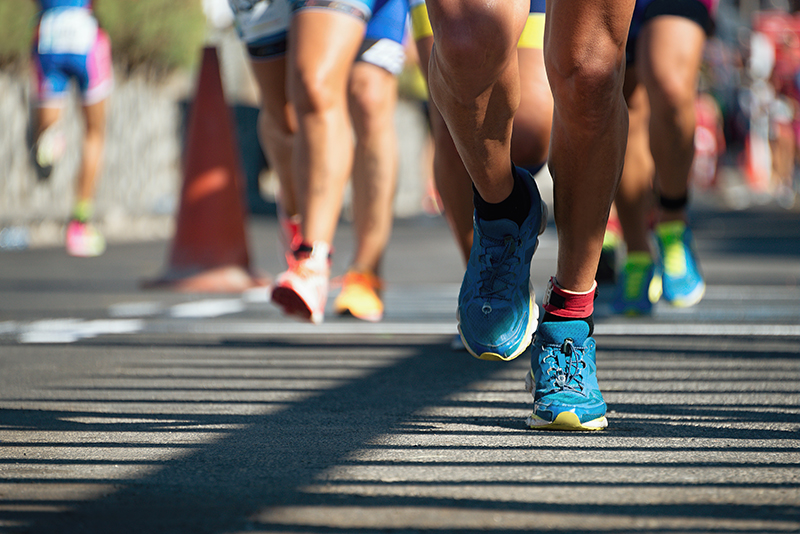

Healing, Function, Recovery, Health


By Dr. Amanda Nguyen, PT ,DPT, at WWS Physical Therapy & Vestibular Rehabilitation
Low back pain is a popular diagnosis that comes into our clinic to get treated. The pain can be caused by something straining you did like lifting something heavy, or can be something that was gradually happening over time like sitting at a desk. As a physical therapist, I am able to evaluate the patient and figure out what the culprits are that can be contributing to your pain. Then I can offer exercises to reduce your back pain and modifications to your personal and work life to help prevent it from happening again. It is easy to offer advice to the patient, but sometimes it is not easy to be the patient.
About 3 weeks ago, I experienced what many of my patients come into the clinic: back pain. I do not know what exactly caused it, but I believe it was when I was running. I did not fall or twist anything. I did not feel pain instantly. I just felt a normal soreness in my back, which I thought was because I have not run in a few days. However, my soreness persisted and it was constant over the next few days. I had difficulty bending over, sitting in the car for about 30 minutes, and performing components of doing my job which is very active as you can imagine. The pain even started to go down my left leg behind my knee, or as it is commonly known as sciatica.

Luckily, I know a few physical therapists and they were able to evaluate me. They recommended exercises for me to perform, and worked on me to reduce my pain. I was very compliant with my exercises. I did them every hour every day, was very cognisant about my posture, used a lumbar roll to assist with my posture, and used proper lifting techniques with my core engaged. Less than 2 weeks of doing my exercises and being aware of my movements, I am able to bend over now and sit in my car with very little difficulty and pain. In addition, I no longer have pain that goes down my leg.
When your pain is acute or just beginning, it is better to seek a medical professional evaluation as soon as you can so you can attack this problem. The sooner you address it, the faster your pain will calm down and you can return to your normal activities. This principle does not just apply to the low back; it can be applied to
I got to experience first hand what physical therapy can do for acute onset of back pain. If you’re reading this and experience some sort of pain, do not wait for the pain to go away on its own. Contact your primary care doctor and schedule an appointment at WWSPT right away! 215.489.3234
Maintaining a regular exercise routine during the holiday season can be challenging for many people. The holiday season can be a stressful, busy time of year. With parties to attend, Christmas cookies to make, and cold weather to combat, it’s no surprise that many put their exercise routine on the back burner this time of the year. Keeping up with your normal exercise routine is not only more possible than you might think, but it can also be an important tool in coping with this time of year.
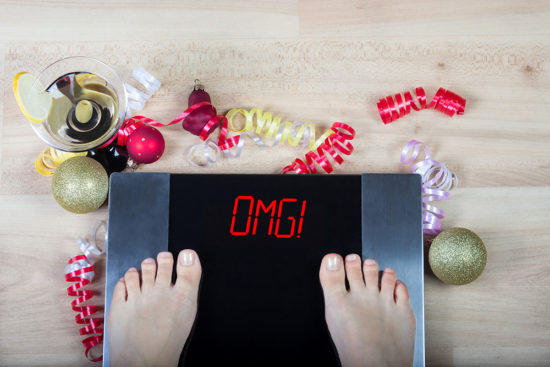
Exercise can help manage weight gain from all the food you eat around the holidays. According to an article published in the New England Journal of Medicine, adults gain an average of one to two pounds each holiday season; this may not seem like a lot until you consider that usually, this weight is typically never shed. That adds up to 10 to 20 pounds of weight gain per decade. Keeping up with at least 30 minutes of moderate exercise per day can help combat this weight gain over time!
Perhaps your usual form of exercise during the warmer months included going for a walk or run outside, or driving to the gym. Many find they don’t have the will-power to brave the cold of winter to keep up their healthy habits. Keep in mind, many of the daily activities you do during the course of your normal day can become exercise themselves! For instance, you can burn 422 calories per hour shoveling snow. If you have a dog, you already have to take them for walk each day; you can maximize the benefit of this chore by actively playing with your pooch on your walk to burn about 280 calories per hour. Do you have lots of Christmas shopping to do? Consider power walking between stores and parking far away from the entrances to get a little extra exercise in. Remember, moderate-intensity exercise is considered any activity that gets your heart rate elevated and makes you feel a little short of breath.

If formal exercise is more your thing, consider searching YouTube for workout videos that you can do from the warmth of your family room! “Fitness Blender” is a good place to start your search; you can find a wide selection of workout videos from beginners yoga, to weight lifting, to a no-equipment-needed cardio routine on this YouTube channel.
The benefits of exercise go beyond weight loss. Exercise is a great tool to help cope with stress and improve your mood during the holiday season. They can help boost mood for those suffering from Seasonal Affective Disorder (SAD), a type of depression that’s related to changes in seasons. There is no denying the benefits of overcoming your challenges to continue your regular exercise program!

The American College of Sports Medicine recommends 150 minutes of moderate-intensity exercise per week; I would like to challenge you to make this your personal health goal this holiday season! You can also add this personal health goal to “Things to accomplish in 2018.”
References:
A prospective study of holiday weight gain.
Yanovski JA, Yanovski SZ, Sovik KN, Nguyen TT, O’Neil PM, Sebring NG.
N Engl J Med. 2000 Mar 23;342(12):861-7.
“How Much Physical Activity Do Adults Need?” Centers for Disease Control and Prevention, Centers for Disease Control and Prevention, 4 June 2015, www.cdc.gov/physicalactivity/basics/adults/index.htm.
Neck and shoulder pain are all common reasons people see physical therapists. Pain is usually dependent on your activities. For example, many people who work in an office and use a computer tend to have neck or shoulder pain. So naturally, when you go to a physical therapist for your pains, they will most certainly assess and address your problem area. In addition, they may also look at your upper back or thoracic spine.
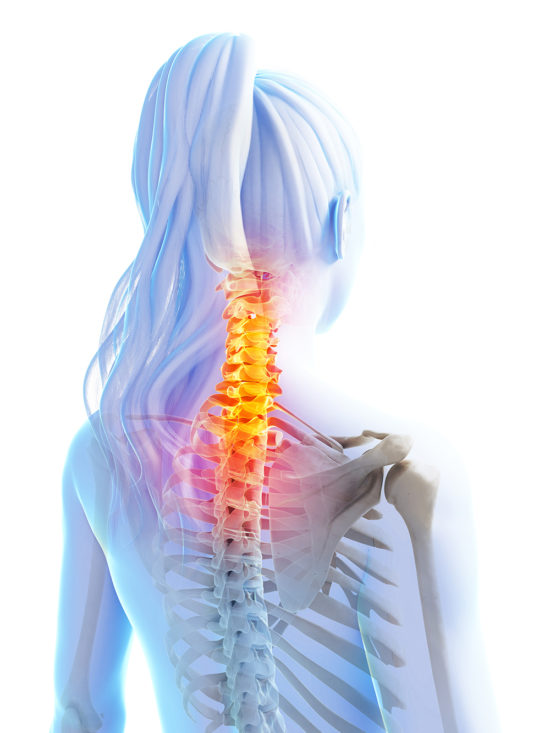
There are 12 vertebrae that make up your thoracic spine. They lie in between your cervical spine (neck) and your lumbar spine (low back). They allow you to bend forward, extend back, and bend to one side or the other. They also have articulations to your ribs and your shoulder blades as well. There are also many muscles that attach from the thoracic spine to the cervical spine and shoulder. So moving your neck and shoulder will indirectly cause movement of your thoracic spine.
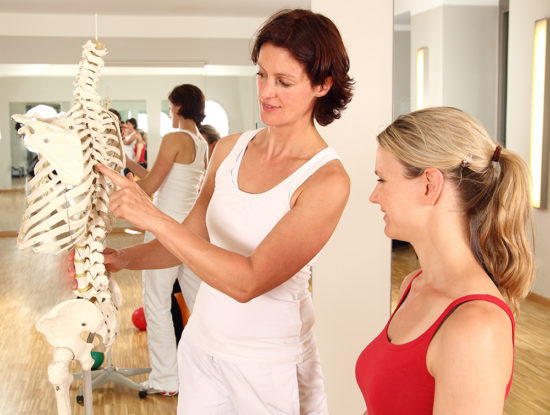
When you have pain, it is most likely due to a dysfunctional movement. When you perform a specific activity, you use certain muscle groups. However if you are weaker, have less range of motion, or less flexible in certain areas, then your body automatically compensates for those muscles and movements. Due to abnormal movement patterns, pain may occur. For instance, the office worker working at their desk is probably sitting with poor posture; they exhibit a forward head and rounded shoulders. As a result, the scapular muscles in the back that hold you in an upright posture are stretched out and not as strong. Your neck is also in an outstretched position it should not be in. Due to the weakness and abnormal flexibility of the muscles, this individual may present with neck, head, or upper extremity pain as a result.
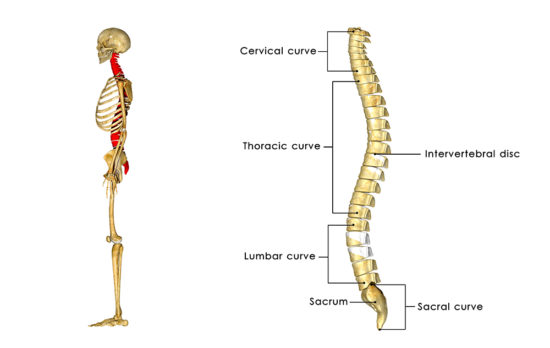
So while you may not have any pain in your thoracic spine, addressing the spine can help with your complaints in your neck or shoulder. Your thoracic spine is connected to your neck and shoulder through the bony articulations and muscle connections. If the affected joints are moving improperly, then other areas of the body like thoracic spine will compensate for the movements as well. Therefore treatment in the upper back may be beneficial, whether it is through exercises or manual therapy by your physical therapist. Treatment in this area can affect movement and pain in your neck or arm. Sometimes people are really sensitive in the injured areas and cannot tolerate much movement through those body parts. Addressing the thoracic spine first can produce analgesic effects and increase movement in the affected areas, which in turn can be more tolerable when the PTs work on the painful body part. Coming into physical therapy will help address your main complaints, but other parts of your body would benefit as well.
Ask the experts at Wendy Wenn Schoenewald Physical Therapy and Vestibular Rehabilitation about treatment.
As we get older, our bones start to break down, muscles are not as limber as they used to be, and moving around gets a little more difficult. Assistive devices such as rollators, walkers, canes, and crutches can be a good aid to safely get around and support you. However you need the proper device, know how to size it, and learn how to use it to get the most benefit.
Walkers and rollators are the most stable of the devices because they have four legs and you use both of your upper extremities for support. The bilateral support allows you to easily weight bear through both arms and can allow one to perform different weight-bearing statuses. If you feel like your legs are not as strong and you feel unsteady on a regular basis, you may want to consider a walker or a rollator. The difference between a rollator and Walker is that a rollator has a seat that you can sit on if you get tired. Just remember to apply the brakes so it does not move on you!

If you are still getting around well but feel your balance is off, a cane might be better. Compared to the walker, the cane only has one leg viruses a walker with four legs. There are canes that have three to four legs known as a quad cane for even more stability. Even though the cane is less stable than the walker, the cane allows a person to be more mobile. Ideally, if you have one leg that is better or stronger than the other leg, you should use the cane on the same side as the good leg. That allows the center of mass of your body over the good leg, and that leg can support you more.
Crutches are usually for athletes or higher functioning individuals. It allows people to mobilize easily if they have to keep a weight-bearing status, like the non-weight bearing. Individuals should have the good balance in order to move with the crutches. With crutches, the armrests should not be right underneath in your armpits. Important nerves are located underneath your auxiliary area, and increased pressure can cause nerve compression and damage. There should be about three or four finger widths between the armrest and the armpit.
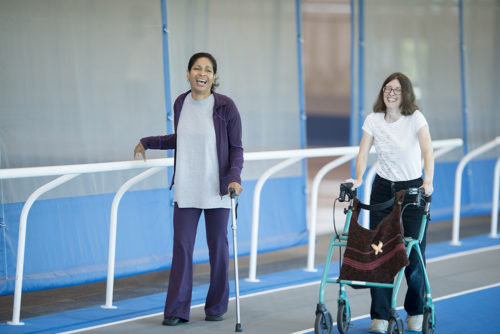
No matter what device you end up using, you need to make sure it is at the right height for you. The correct size allows you to efficiently use your arms and to prevent any injury. To properly size the device to your height, you should stand with good posture and let your arms rest by your sides. You should naturally have some bend at your elbow. From this position, the handle of the device should hit at the crook of your wrist.
Knowing how to use the device is very important as well. To use a walker, you push it forward first and step within the middle of the walker. Make sure it is not too far forward to avoid excessive back flexion to increase your stability and protect your back. For canes and crutches, the leg of the device should be placed about a foot forward diagonal to your feet. Ideally, the device should move with your affected leg. You could also move the device first, followed by your affected leg, then your other leg to ambulate.
Ask Wendy Webb Schoenewald Physical Therapy and Vestibular Rehabilitation about the Assistive device program; #CARES for “Gently Used Medical Equipment!” that #WWSPT supports.
Drop off equipment at #WWSPT offices 1456 Ferry Road, Unit
601, Doylestown, PA., on Tuesdays from 12:00 PM to 2:00 PM and Saturdays from 10:00 AM to 12:00 PM. Phone 215.489.3234.
We strive to provide an environment of recovery and healing for our clients, to allow them to advance their health and return to function, recreation or sports. It is our belief that Physical Therapy is the initial link in the healthcare system for Musculoskeletal and Balance related issues and we are the true experts on exercise. We look forward to a long term relationship with our patients and their families over their life span and hope to become their practitioner of choice for acute musculoskeletal issues, neuromuscular issues as well as reoccurring events limiting their Wellness. We want to be a part of our patients Healthy living and Healthy aging.